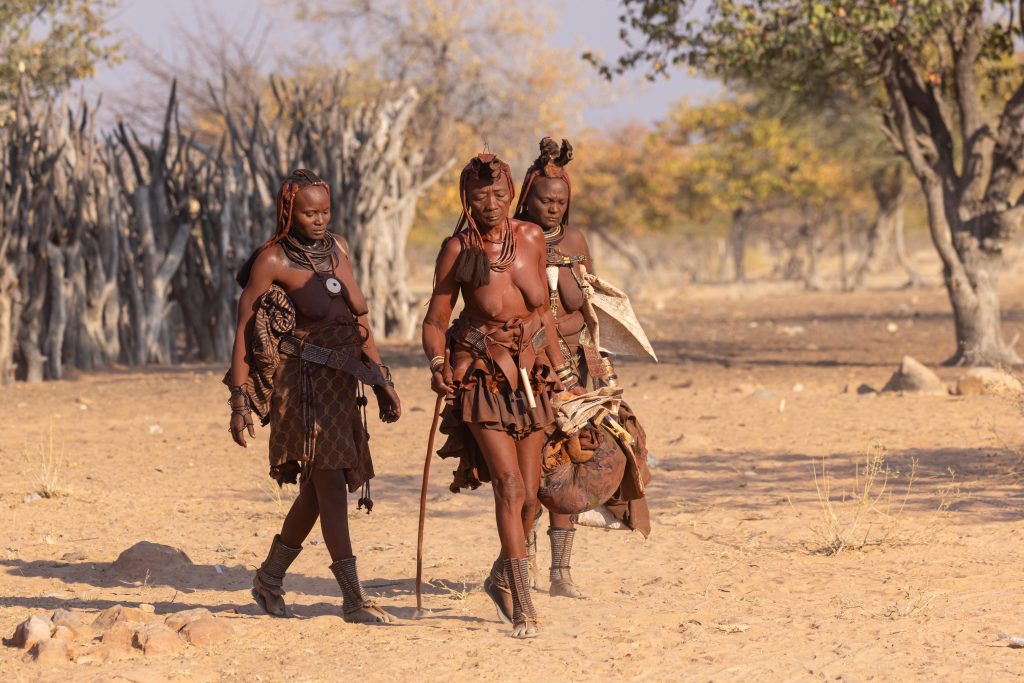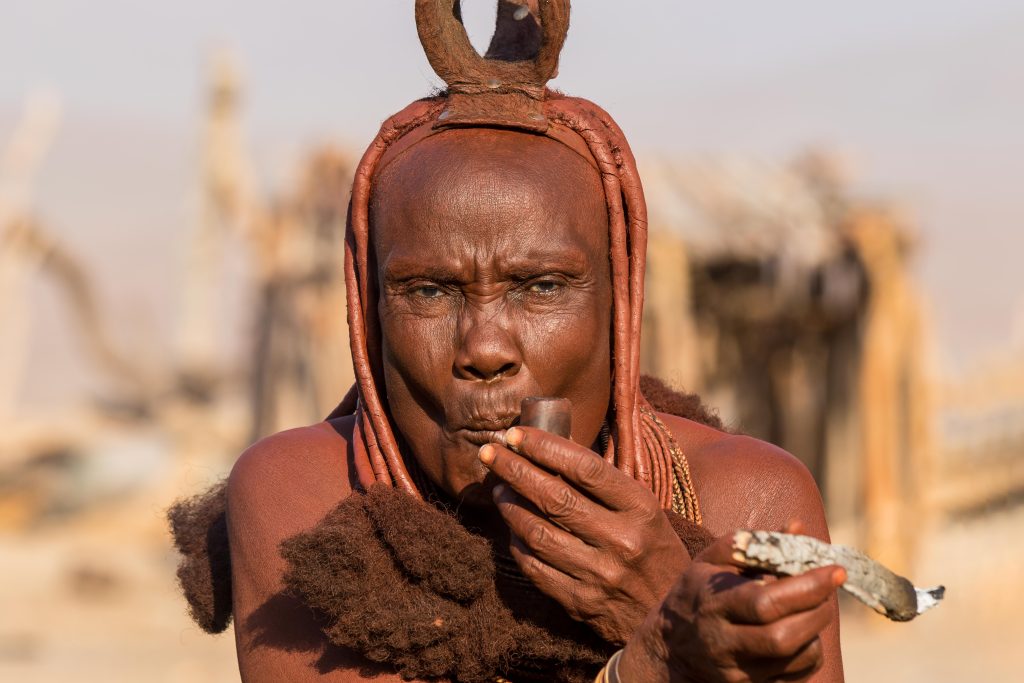the himba tribe
indigenous people of namibia
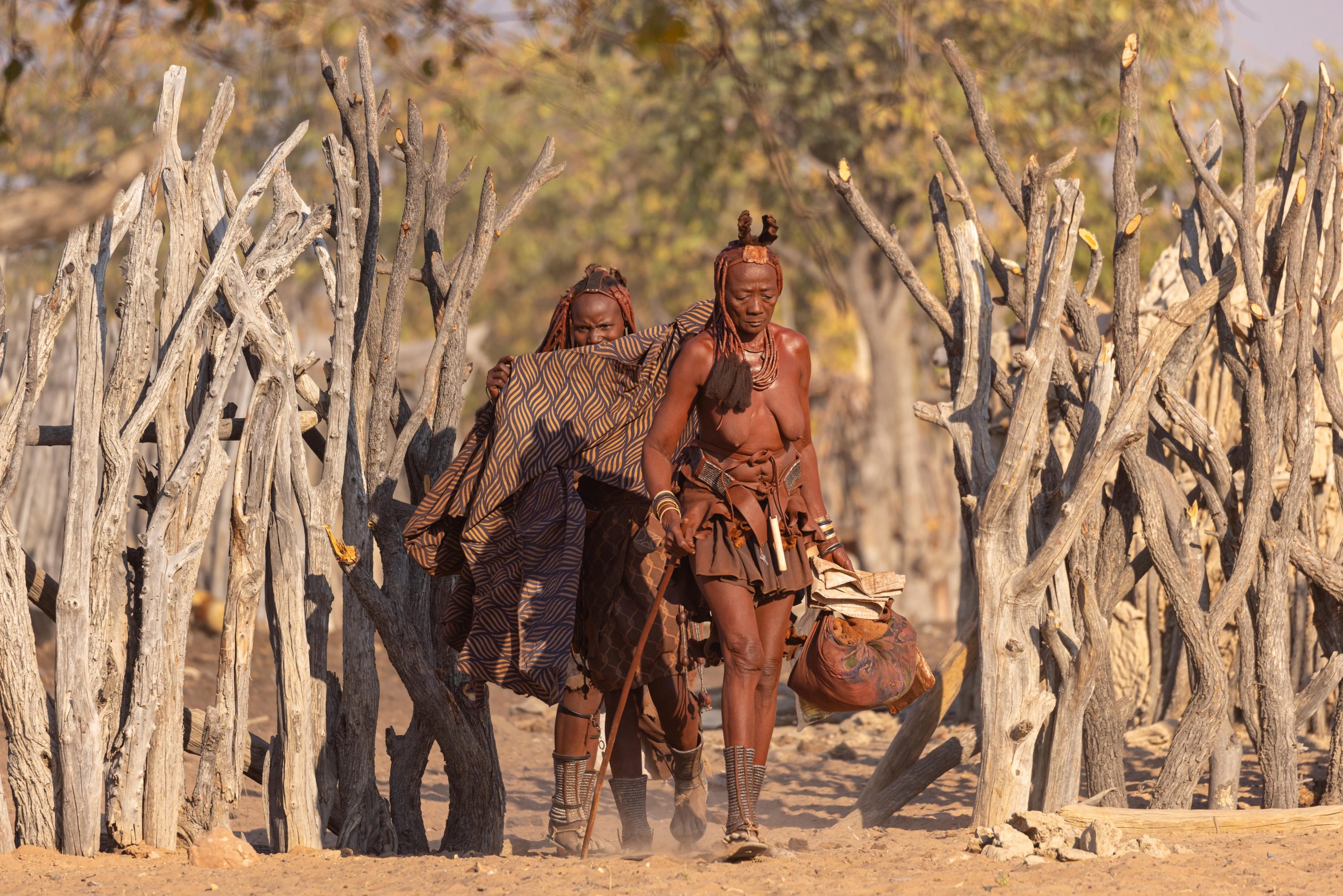
The Himba are an indigenous semi-nomadic people residing primarily in Namibia’s arid Kunene Region, with some communities also found in southern Angola. With a population of approximately 50,000, the Himba are renowned for their resilience, cultural traditions, and distinctive appearance, which have remained largely unchanged despite external influences and modernization.
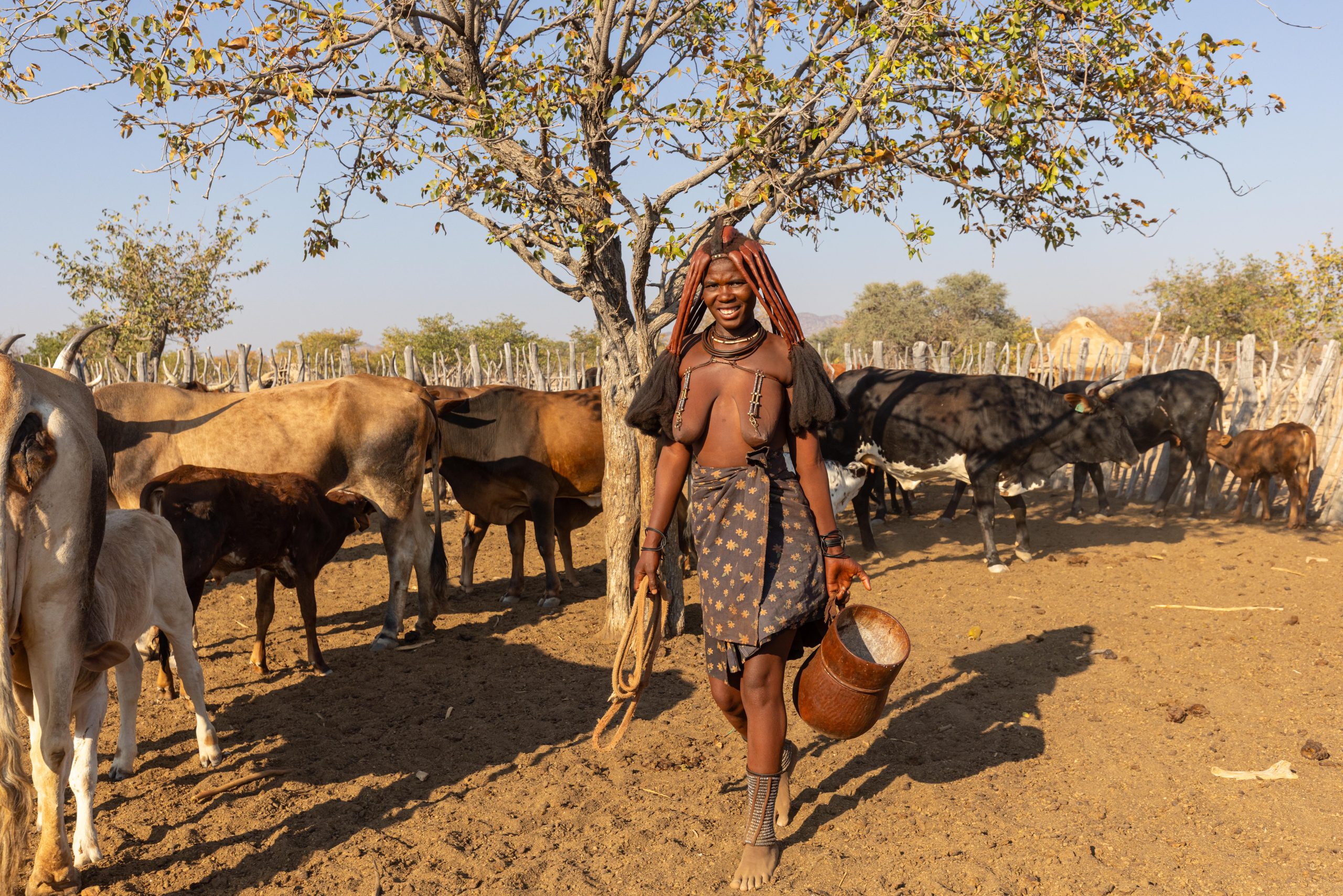
The Himba are traditionally pastoralists, relying heavily on cattle and goats for their livelihood. Livestock serves not only as a source of milk and occasional meat but also as a measure of wealth and social status. Milk is a dietary staple, and women often spend hours churning it into butterfat, which is also used in their iconic otjize paste. This reddish mixture of butterfat and ochre is applied daily by women to their skin and hair, offering protection from the harsh sun, acting as an insect repellent, and symbolizing beauty, fertility, and a connection to the earth.
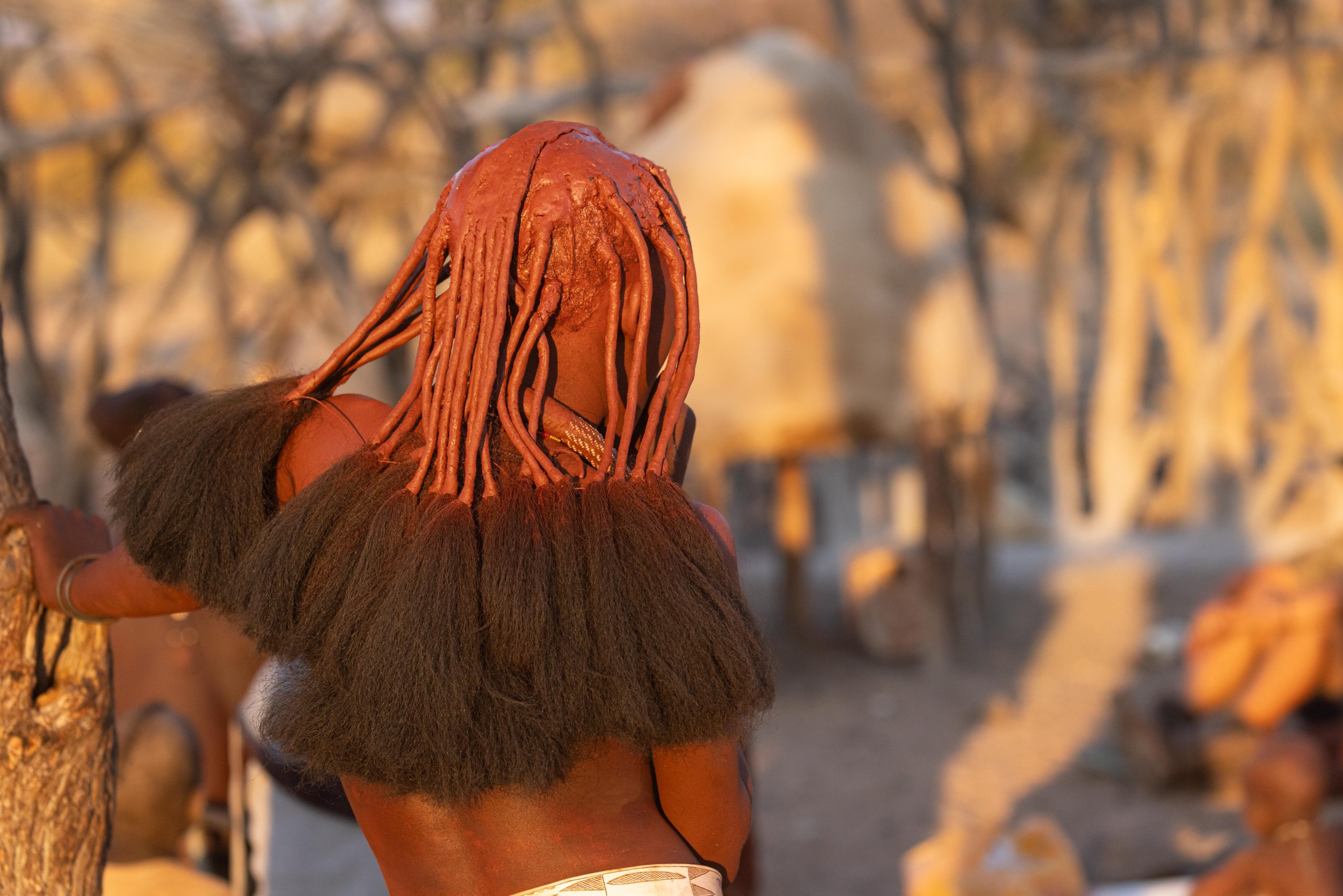
Himba society is patriarchal, but women hold significant responsibilities within the household. They are in charge of caring for children, preparing food, maintaining the homestead, and applying the otjize paste. Men are primarily responsible for herding livestock and making critical family decisions. Marriages are often arranged, and polygamy is common, with wealthier men often taking multiple wives.
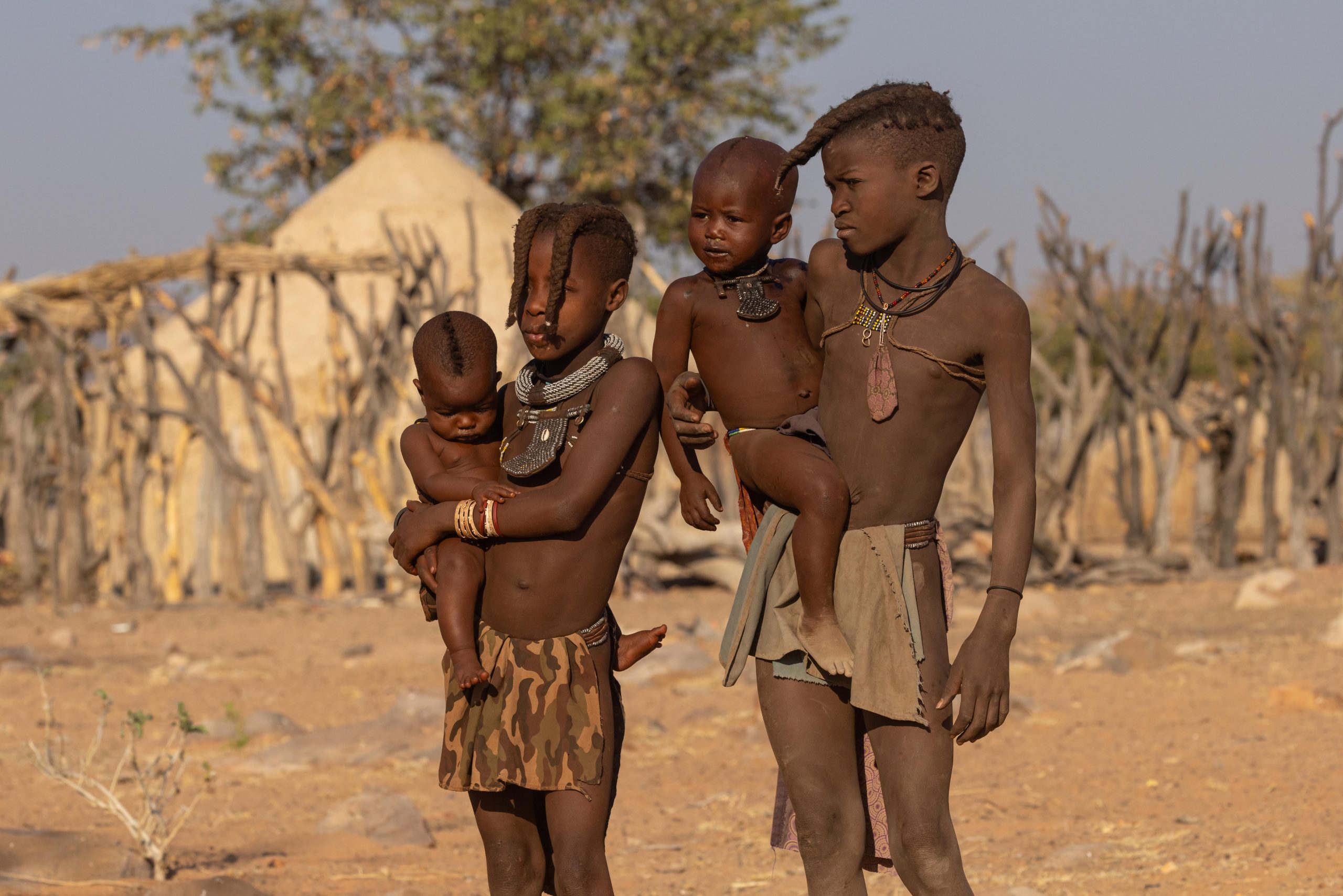
Spirituality is deeply woven into Himba culture. They worship Mukuru, their supreme god, and maintain a sacred ancestral fire called okuruwo, which acts as a spiritual connection between the living and the ancestors. The fire is never allowed to go out and is tended to regularly by designated family members. Rituals and ceremonies, including offerings and prayers, are conducted around this sacred fire.
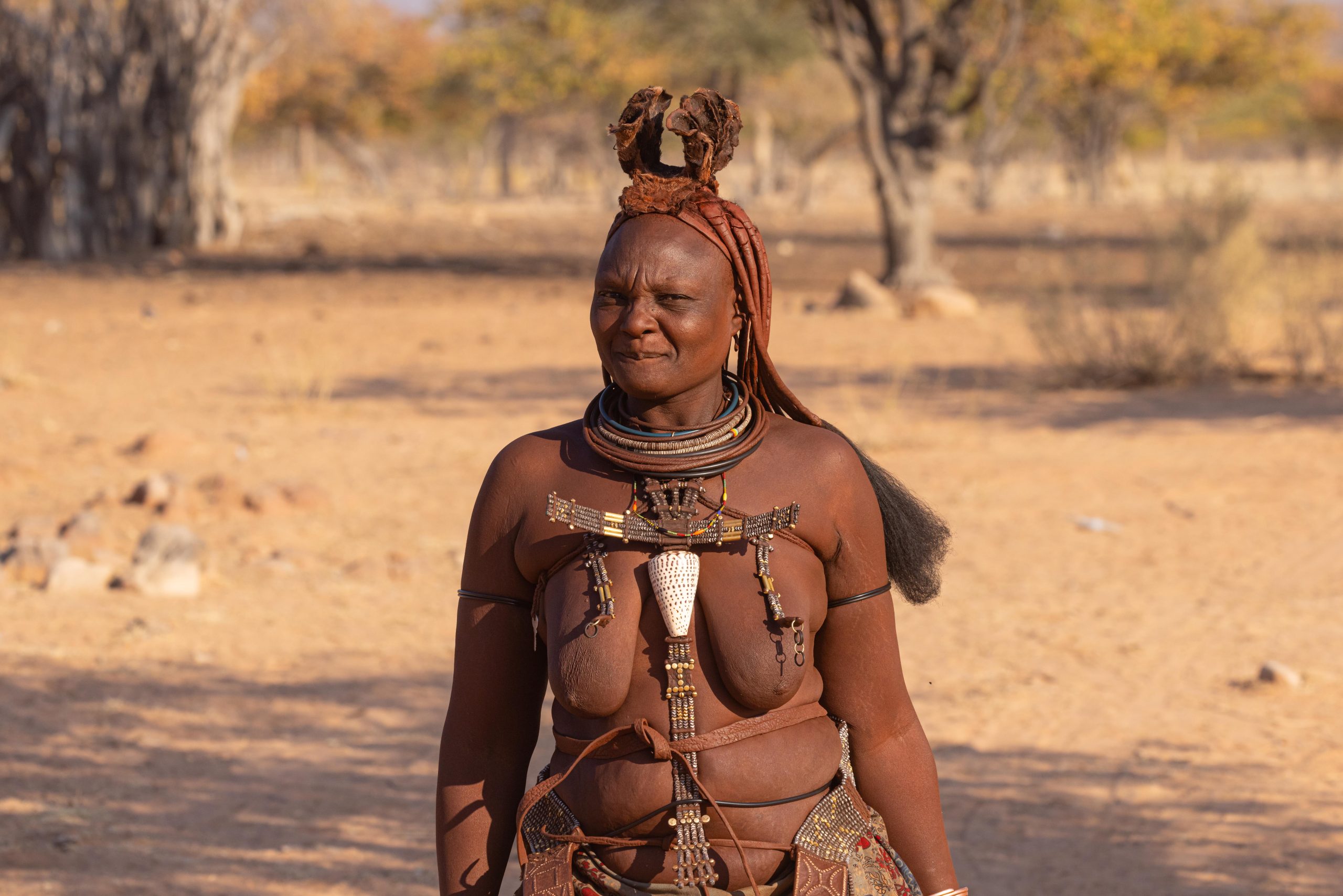
The Himba are also known for their elaborate hairstyles and jewelry, which carry cultural significance. Women’s hairstyles evolve as they grow older, with different designs indicating stages of life, such as puberty, marriage, or motherhood. Jewelry, often crafted from beads, shells, and metal, serves both decorative and symbolic purposes.
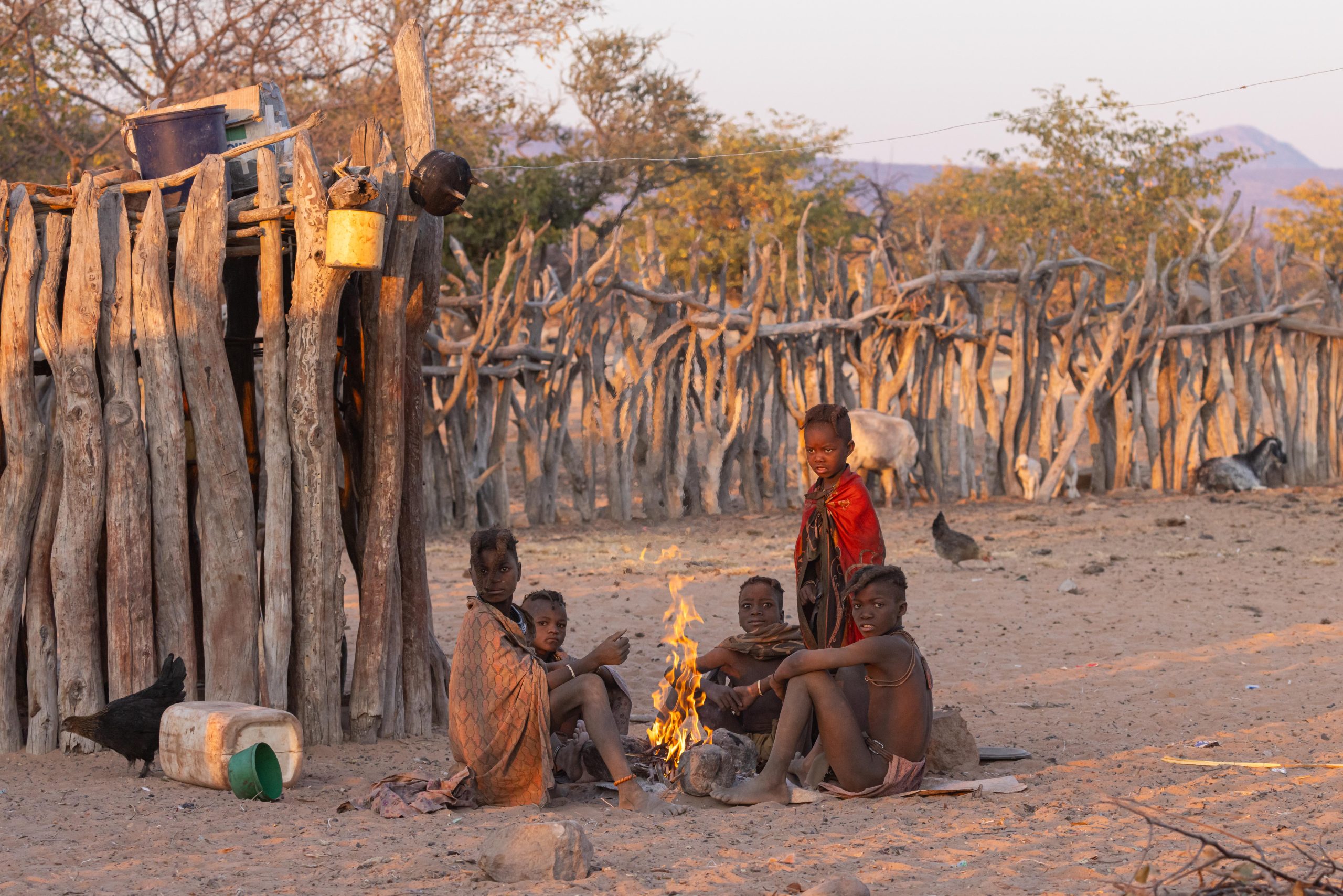
Despite their efforts to preserve their traditions, the Himba face numerous challenges. Climate change threatens their cattle-based economy, while tourism and modernization have brought both economic opportunities and cultural pressures. Additionally, land rights disputes and infrastructure projects, such as dams, have disrupted their way of life.
Nevertheless, the Himba people remain steadfast in preserving their cultural heritage. Their traditions, spirituality, and resilience continue to inspire admiration worldwide, serving as a testament to their ability to adapt while holding firmly to their identity in an ever-changing world.
Want to visit the Himba Tribe?
I met the Himba briefly during my first trip to Namibia, in 2018. When I came back to Namibia in 2019 we visited a small Himba village near Puros. Although it looked like an authentic village, there were only a few women and children and not much activity. There was a handicraft and souvenirs for sale, and they have regular visitors. It was a great introduction to Himba culture, but we wanted to learn much more about the authentic Himba and immerse myself deeper into their culture and also stay a night with them.
After some online research I found Tjingi, a Himba and freelance guide. From some online reviews it was clear he was the right guide for us. And wow, did he deliver! He brought us to an incredibly authentic Himba village, with a few absolutely lovely families. They welcomed us with open arms, proudly showing their way of life. We had an unforgettable experience and it was a highlight of our 4 week trip! You can read and see more about our visit to the Himba here:
I promised Tjingi to help him get more guests, not only for himself but also to be able to support some Himba families. So I built him a website, www.HimbaTribe.com. If you want to visit the Himba tribe, I highly recommend Tjingi. Click below for his website, some of his programs and contact details!
– related photo stories –
visual adventures
The Himba Tribe, Namibia
The Himba are an indigenous semi-nomadic people residing primarily in Namibia’s arid Kunene Region, with some communities also found in southern Angola. With a population of approximately 50,000, the Himba are renowned for their resilience, cultural traditions, and distinctive appearance, which have remained largely unchanged despite external influences and modernization.
The Himba Tribe: Otjize
The Himba tribe of Namibia, living primarily in the arid Kunene Region, are renowned for their cultural traditions. The use of otjize is standing out as one of their most distinctive practices. Otjize is a paste made from a mixture of butterfat and finely ground red ochre, often infused with…
